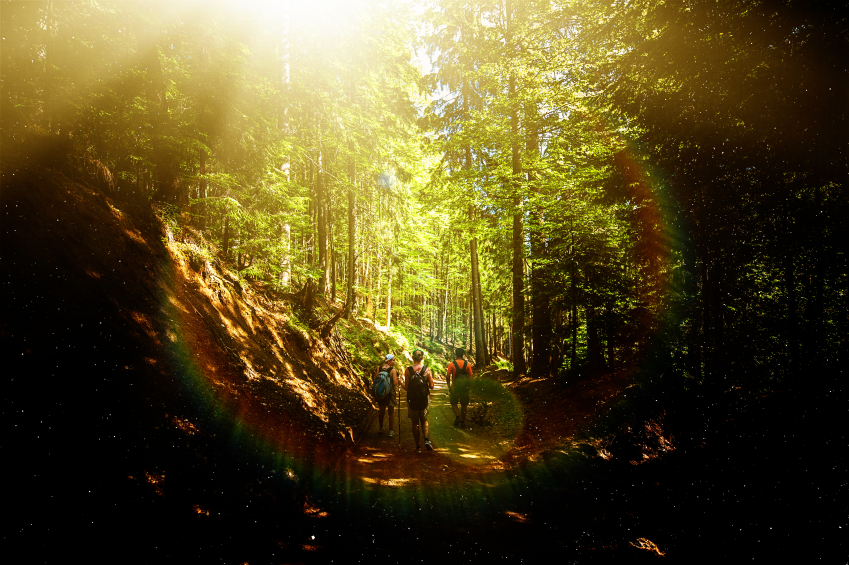
So you’re wanting to get out hiking or trekking outdoors but you don’t know where to get started? Well, there are a some basic essentials that you’re going to need to know to get started in hiking, and we’re here to guide you through them.
First of all, before you set out to do any kind of hiking or trekking at all, you need to make sure you’ve got the right hiking gear, the right equipment, and you know what you’re doing. So, that seems like a good place to start…
Essential Hiking Clothing
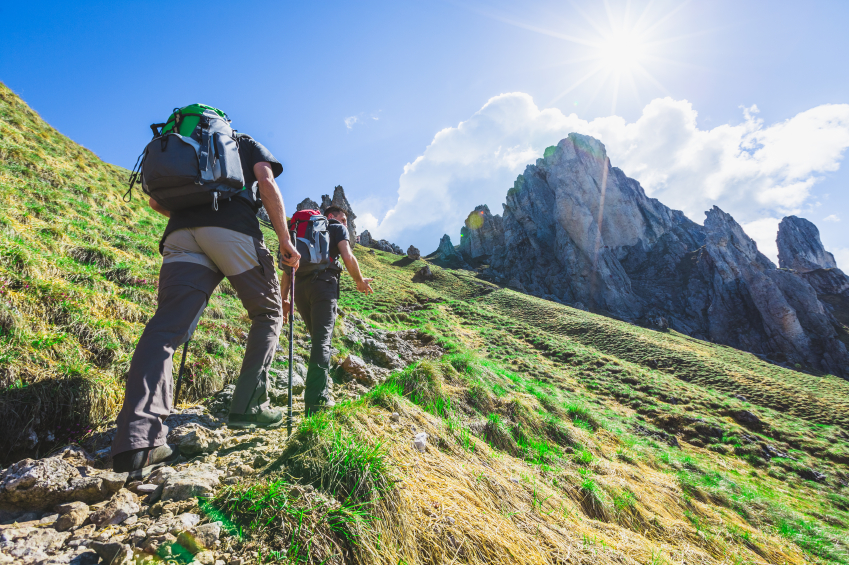
It’s imperative that when you’re out an a hike, you’re wearing the right clothes to let you do just that without getting bogged down, overly sweaty, too cold, too warm or absolutely soaked in water. It can be the difference between an enjoyable hike over a period of days or having to turn around because you’ve not come prepared for the conditions.
So, exactly what outdoors clothes do you need when you’re taking on the wild? Hiking boots or hiking shoes? What’s the deal with hiking backpacks, hiking boots, mid-layers, jackets and hiking trousers? Let’s have a look…
- Hiking Jacket: A hiking jacket or trekking jacket is an absolute essential to pack wherever you’re going, even if the forecast says it’s going to be scorching sun all weekend with a chance of the hills turning into a desert.
- The best hiking jackets are windproof and waterproof to a high standard, covering all possibilities on the hill. Crucially though, you’re also going to need a jacket that’s breathable, very well ventilated and has numerous pockets and a compact design, for easy packing. You’ll usually find jackets that come with all of the above come with a good warranty too – because they do the job they’re designed to do.
- Hiking Mid layer: Your hiking or trekking mid layer, or insulating layer, is often a fleece, as it is charged with trapping and subsequently putting to good use the heat that your body generates as you hike or trek around outdoors. This should be warm, comfortable, but also featuring technical features. Make sure your mid layer is quick drying, low weight, easy to wear below a jacket and doesn’t whittle away or tear easily.
- Hiking Base layer: Your hiking or trekking base layer is charged with wicking away the sweat that you work up while you walk outdoors. It’s crucial that you find a base layer that you find comfortable, as the wrong material for the wrong person can lead to itchiness or discomfort while walking, which makes the journey all the more difficult.
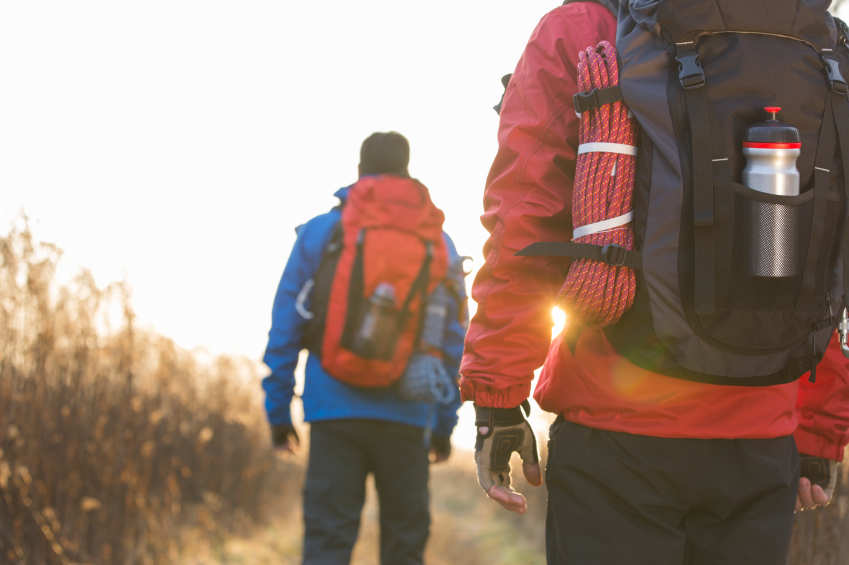
- The right base layer will increase comfort, ventilation and temperature throughout the hike. Merino Wool, the softest wool of all, is often touted as the best material for base layers, though it can cause itchiness in some, so test it out before you trust it on a week-long hike.
- Hiking Trousers: It’s absolutely crucial that your hiking trousers are waterproof, lightweight and can take a fair amount of wind too. Look into getting all of these things and you’ll get exactly what you paid for on your hike or trek – ultimate comfort and practicality. You’re going to want plenty of pockets, and trousers that offer stretch and flexibility in equal measures.
- If you’re heading out in the sun, it can be an idea to get trousers that zip off at the knee and become shorts, while if you’re heading out in the rain, bringing overtrousers – fully waterproof trousers that slide on top of your other trousers – is somewhat of an essential. Getting a pair of gaiters, which protect your lower leg and ankle, can also be a very good idea.
- Hiking Boots: Now, for a start, let’s just outline that if you’re going to be trail running, you need trail running shoes rather than hiking boots. And if you’re sticking to paths over short distances, hiking shoes can be more appropriate than hiking boots as well.
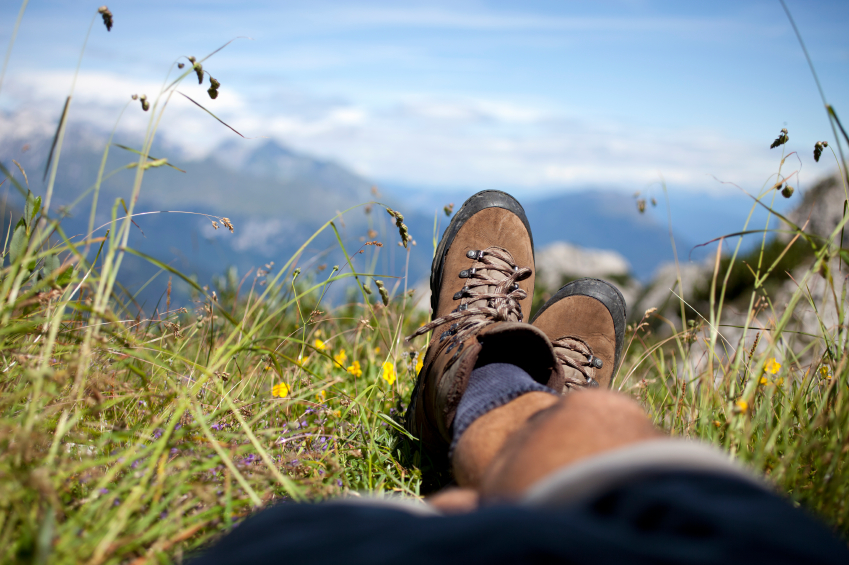
- Hiking boots should have a high ankle cuff in order to prevent strains, stings, twists and support you throughout your journey. You’re also going to need to look for a flexible mid-soul, a tough soul made specifically for taking on the rocks and bumps of the wilderness, and some sort of waterproofing system, whether Gore-Tex or otherwise. Make sure you get winter hiking boots for the colder months.
- Hiking Socks: The best kinds of hiking socks will keep you feet dry and warm during cold and wet adventures and keep them cool when it gets too hot. Durability is crucial here, as is a quick drying function and moisture transfer. Merino Wool socks also come highly recommended and can be more durable than others, but again, test them out first before using them over long-distances.
- Hiking hat: Pure and simple, if it’s warm and the sun is out, get your sun hat on. If it’s not then get a beanie or warm hat on to keep your head warm. Sunglasses can also be a good idea.
Hiking The Lake District: 8 Of The Best Hikes
Essential Hiking Gear
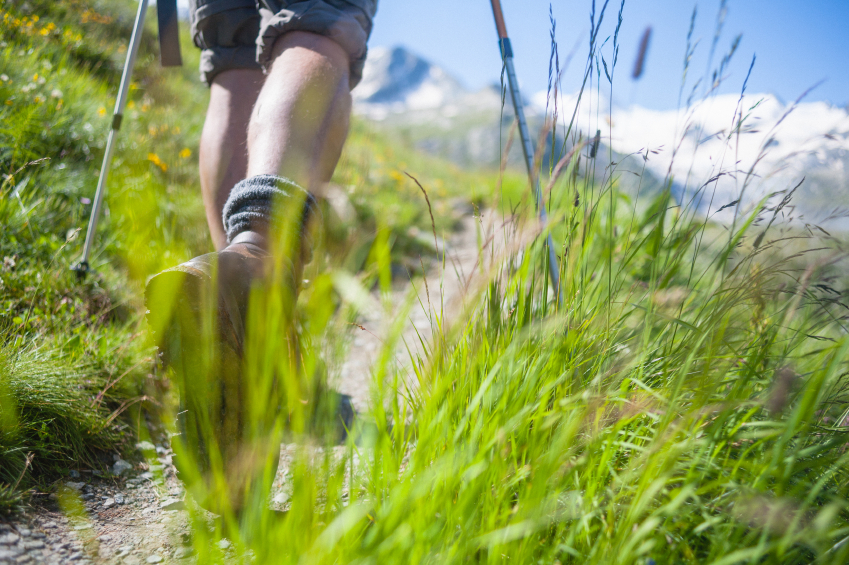
- A Sleeping Bag: The more lightweight the better, the bigger the range of degrees, the more temperature flexibility you’ll have and the more comfortable you’ll be, and try get a bag as compact as possible. Also ensure you’ve got a waterproof bag to store it in.
- A Hiking Backpack: When it comes to hiking backpacks, it’s all about going as sturdy and lightweight as you possibly can. Look for plenty of pockets, easy accessibility, enough room to house all your equipment and enough waterproofing to ensure nothing inside will get wet. Waterproofing covers are also recommended.
- A Sleeping Mat: Presuming you’re not going on a family trip with a car and are bringing a giant pump up air mattress, a lightweight, sturdy, padded sleeping mat is what you’re after. Self-inflating mats can add even more comfort for a small bit of extra money, and are often just as compact as their uninflated counterparts too.
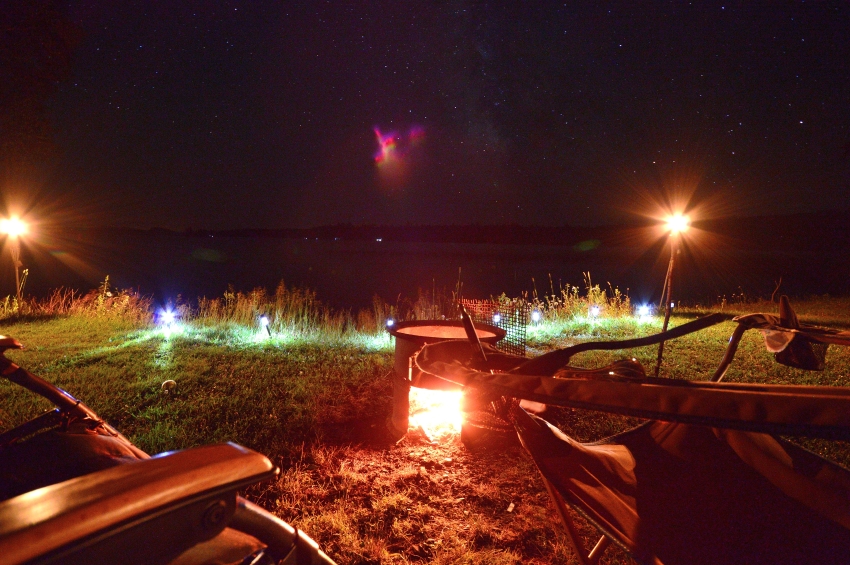
- A Torch: Y’know, for lighting stuff up? Seriously though, a wind up torch can be the best option as you don’t have to rely on the battery.
- Map & Compass: An absolute essential even if you think you know your route pretty well. If your route becomes diverted for whatever reason, this could save your life.
- Waterproof Matches: Crucial for starting fires and helping with cooking, which we’ll touch more on later!
- First Aid Kit: More on survival first aid here, but the basics of what you’re after include a survival bag, whistle, bandages in various sizes, duct tape, steristrips, antibiotic cream, anti-blister cream, pain killers, a surgical cutting tool, sterile needles, anti-allergens, sun cream, vinyl gloves, alcohol wipes, drying wipes, sterile dressing and splinter tweezers.
- Mosquito Repellent: Because insects are hate-filled creatures.
- Walking Poles: Designed to take the pressure off your feet in tough terrain, these can be incredibly useful for posture and increasing your comfort on walks. If you’re going to use one or even two walking poles – they are normally sold individually – make sure you test out the length and ask an assistant to help you get the right size.
What Tent To Bring
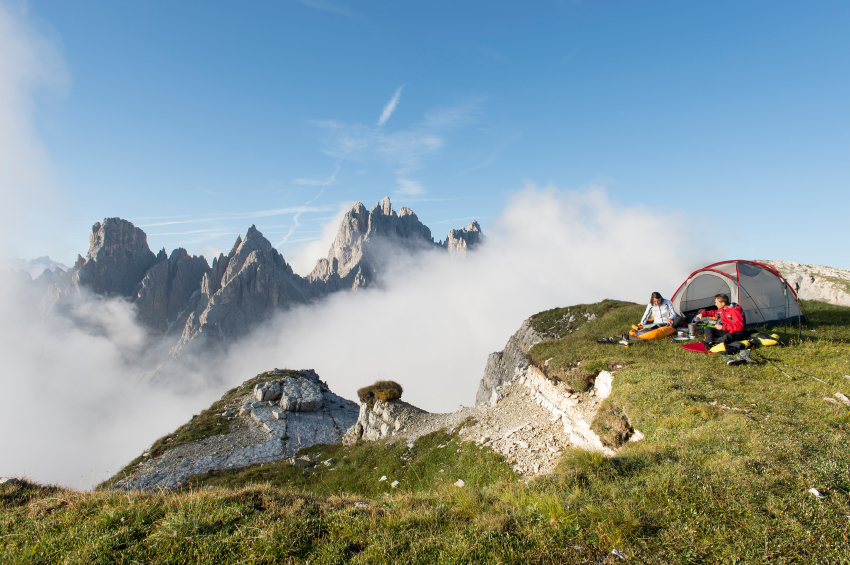
Getting the right tent for you or your party is absolutely vital if you’re going to enjoy your stay out in the wild. Too heavy and bulky and it can ruin your walk, but not big enough and it can leave you sleepless and tired the next day. Worse yet, if you don’t get the waterproofing right, it’s pretty much game over for your time in the wild. Here are a few things to think about when you’re buying:
- How many of you are there?
Are you just buying a one-man tent for yourself, or will there be two or more people staying in the tent? Either way, make sure you check out the exact measurements of the tent, and even ask to see it put up before buying it. This will allow you to see how easy the thing is to put up and down, and allow you to climb inside and judge if there’s enough room for you to get comfortable.
- Care about weight
Many of the best tents in the world of camping are incredibly lightweight and compact, but with this comes the fact that they can be a little too claustrophobic for many hikers. Again, it’s crucial that you see the tent fully built to judge this for yourself, but if you’re only going for an overnight hike and are with friends, it can be an idea to bring a slightly bigger tent along to give you more room at night.
It’s also worth noting that while easy to construct and put away again, pop up tents are often heavy and tough to carry. You’re normally better without one, especially if you’re planning on hiking or trekking for more than a few hours.
- What conditions will you be camping in?
If you’re going to be camping in scorching heat, you should make sure your tent reflects sunlight, is well ventilated and easy to air, ideally with a porch to stop bags and shoes getting too hot. If you’re in the rain, waterproofing is everything. Ask about how much rainfall the tent can take, and make sure again that there is some sort of porch area if there isn’t enough room inside the tent for all of your belongings and yourself. Check out our guide to winter tents and winter sleeping bags here.
Before You Head Out
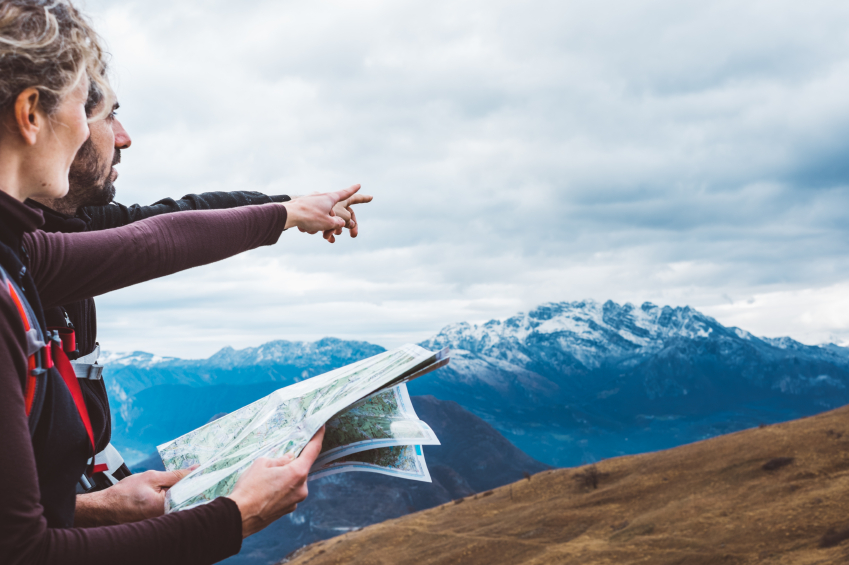
- Plan Your Hike: Decide how long you plan to hike. Whether it’s over the course of a whole weekend or just a few hours hiking the Peak District during the middle of the week, there are routes for everyone out there, and shorter hikes can be a brilliant way to tune your muscles, fitness levels and work on your outdoor skills before taking on a bigger venture.
- Plan out your route online, and be realistic! You may be incredibly keen to get hiking and trekking immediately and explore the outdoor world, but if you plan out a route that’s beyond your fitness or worse yet, your navigation skills, you could end up in a lot of trouble.
- Team or Solo Hike? You also need to think about whether you will be heading out alone or with a friend or two. If the former, you need to make sure you tell someone when you are going out and what time you’ll expect to be back, in case you end up in a survival situation out in the wild with serious injury or otherwise and need help. It’s also worth doing this if you’re out trekking with friends too, just in case.
- Check the Weather: This last one should go without saying, but make sure you check the weather forecast before you head out into the wild. If it’s going to be pouring with rain, and you’re still keen to head out, good on you – but you’re going to need the right equipment and clothing to deal with the conditions.
What To Eat When Hiking
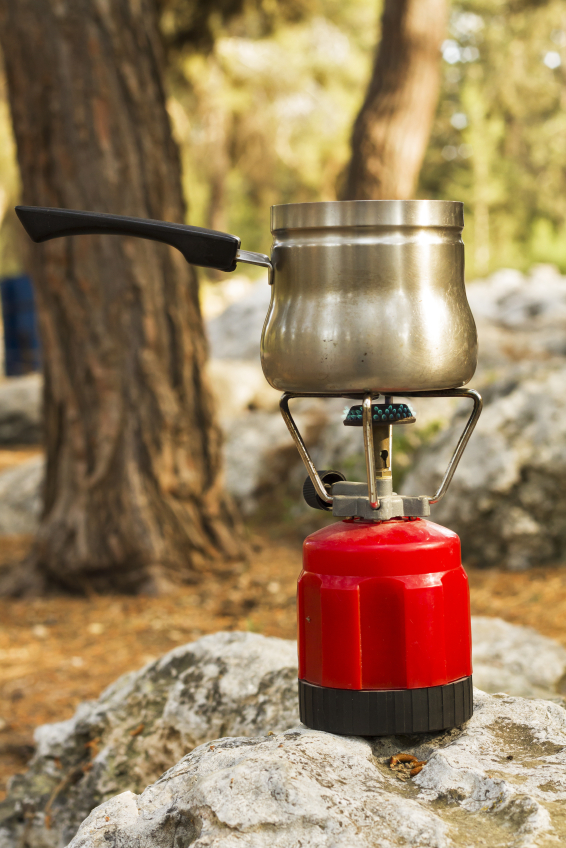
There are few hiking tips everyone should know before they head out on a trail. When you’re thinking of what hiking food and trekking food to bring with you into the hills, remember to think smart. Water-based foods like soup or even fruit don’t have nearly as many carbohydrates or fats that will fill you up as other options.
You can get specialized camping foods from the likes of Wayfayrer that are designed specifically to give you the calories and energy you need. But what about the equipment?
When it comes to hiking cookware, you’ll want a good camping stove, cooking pans, tea towels, plates and cutlery. Make sure you cover your cooking pot when it’s heating to save on your fuel too.
Snack wise; energy bars, cereal bars and the likes of haribo and raw jelly work well for filling you up and giving you a boost. Raw chocolate bars will melt and cause a mess you definitely don’t want to clean up.
Other Tips
- Take photos! Taking photos can both help you remember your hike and show off to your mates, but also help if you get lost or if you’re planning out your routes in the future.
- Map Your Hike! There are plenty of apps out there that will show you how far you have gone, how many calories you have burned and just exactly where you have walked along our fine planet. This is great for planning out future routes and working out your favourite spots to hike.
